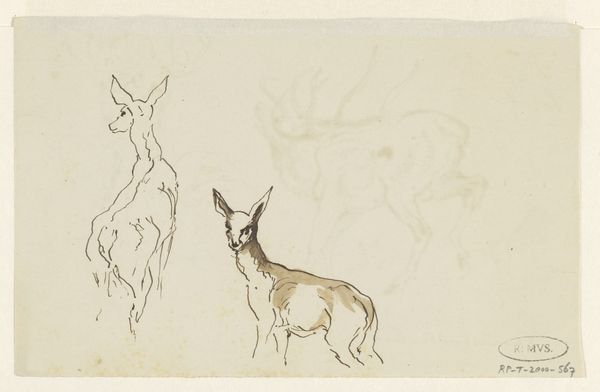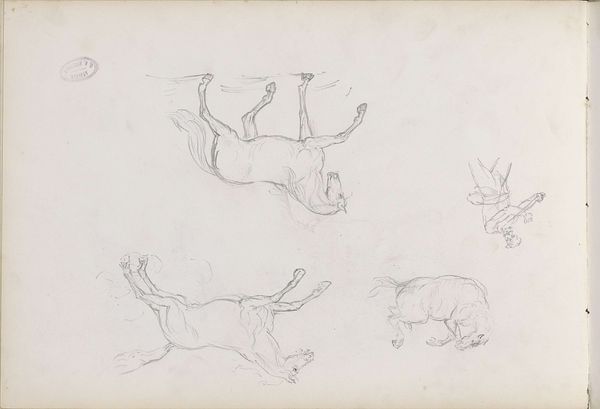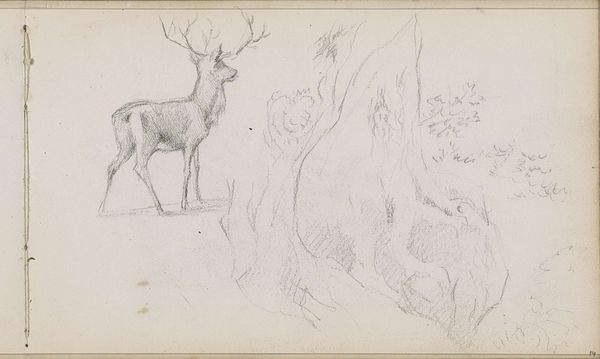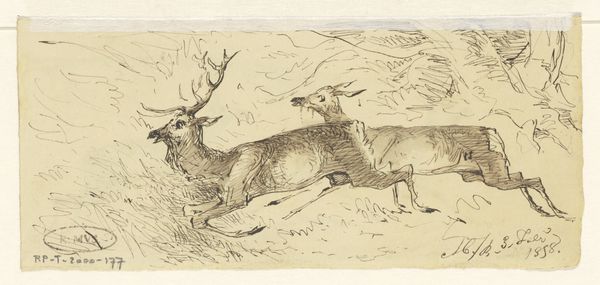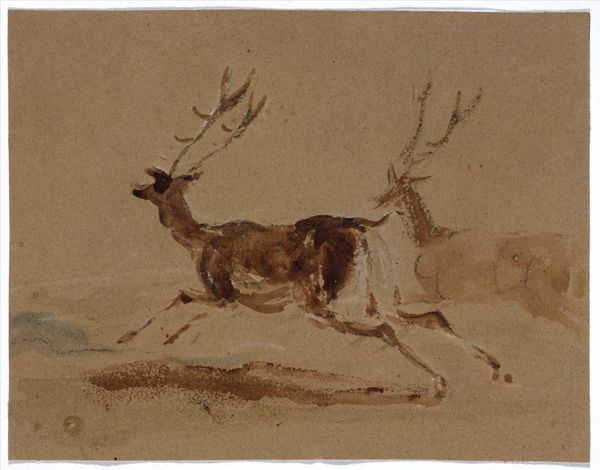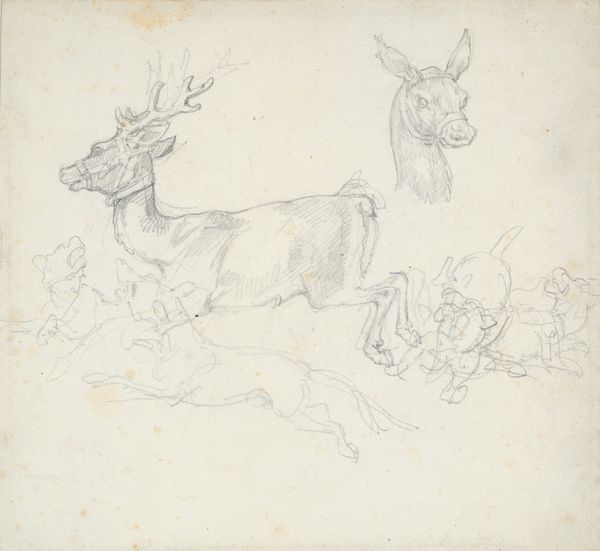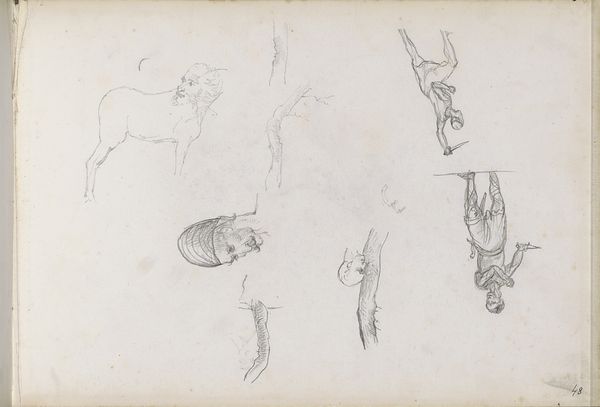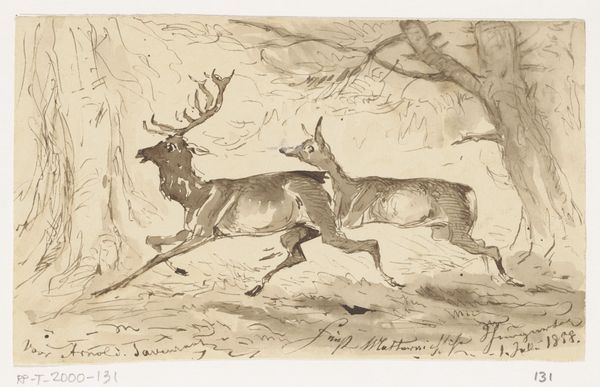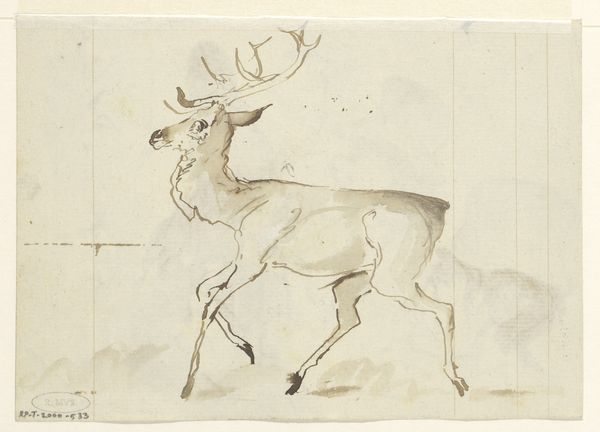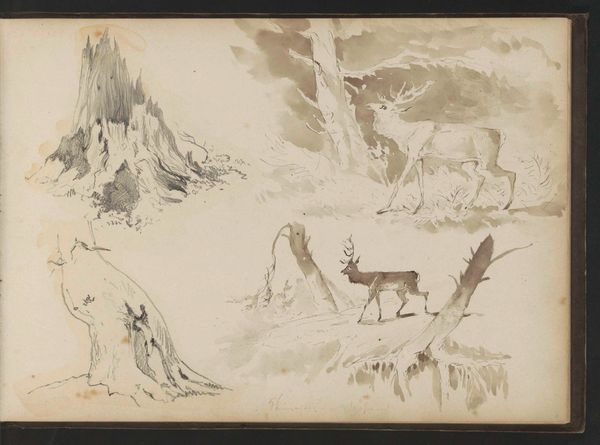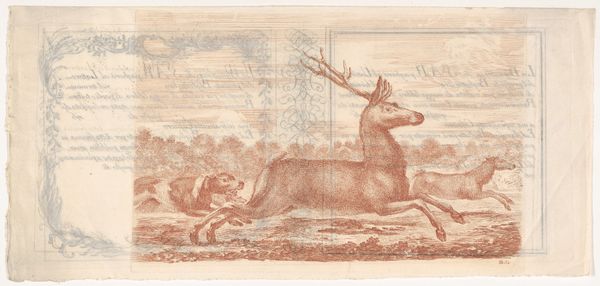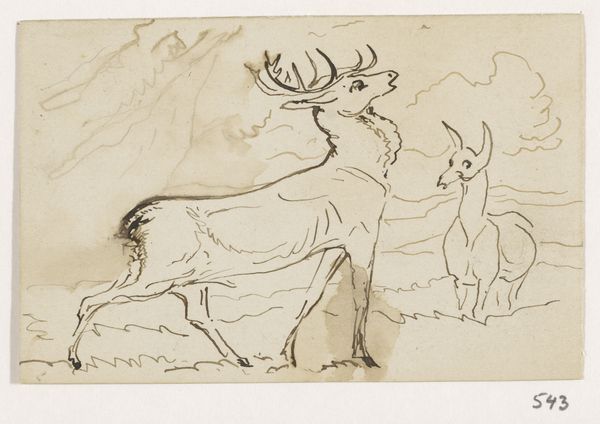
Five Deer Sketches; Sketch of a Bare Tree (from Sketchbook) 1857 - 1867
0:00
0:00
Dimensions: 9 3/4 x 13 7/8 in. (24.8 x 35.2 cm)
Copyright: Public Domain
Curator: I find the starkness of the pencil incredibly compelling; it’s almost haunting. Editor: I see that immediately too. It evokes a feeling of quiet observation, like a naturalist carefully recording their findings in the field. This piece is called "Five Deer Sketches; Sketch of a Bare Tree," and it comes from a sketchbook by Thomas Hewes Hinckley, dating between 1857 and 1867. It resides here at the Met. Curator: Interesting how the artist juxtaposes images of deer – some standing, others recumbent – alongside a single, skeletal tree. The deer, traditionally symbols of grace and connection to nature, here appear almost vulnerable, presented next to this gnarled tree. Editor: Definitely vulnerable. Look at the way the deer are rendered. The faint lines give a dreamlike quality but, on the other hand, also convey very realistic representations. For millennia, deer have stood as emblems of swiftness and gentleness, yet this scene mutes these traits. They seem at rest, and it almost gives an aura of death. Curator: It makes me wonder about the context in which these sketches were created. Mid-19th century America was a time of westward expansion and increasing industrialization, which had a huge impact on the landscape and animal populations. I am prompted to ask: is Hinckley documenting a disappearing way of life? And is the barren tree symbolizing the environmental cost of progress? Editor: I like that reading! You know, trees themselves carry diverse cultural symbolism—the Tree of Life, Yggdrasil... But stripped bare like this, it does seem ominous, yes, like a lament for the land itself. Even with just a humble pencil, Hinckley encapsulates loss. Curator: Yes, a potent loss of something pure; Hinckley shows us that animals in their environments are part of a broader cultural-historical phenomenon, which, here, asks of us, what does progress really mean? Editor: This intimate glimpse reminds us to see animals with respect and care; with these seemingly simple sketches, we are able to see complexly.
Comments
No comments
Be the first to comment and join the conversation on the ultimate creative platform.
